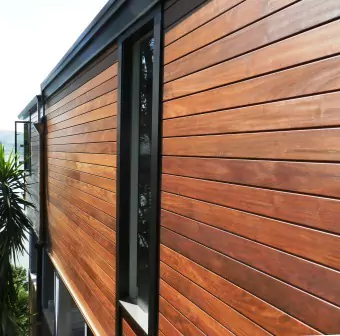
Related Posts
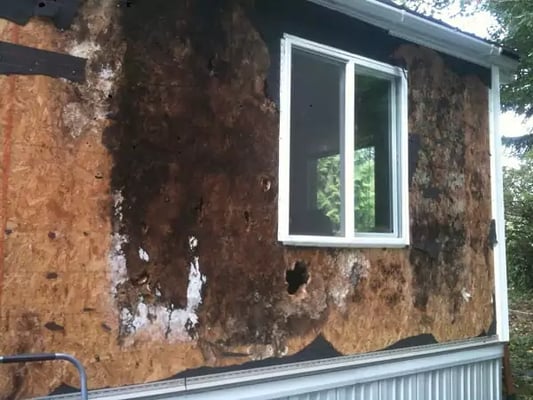
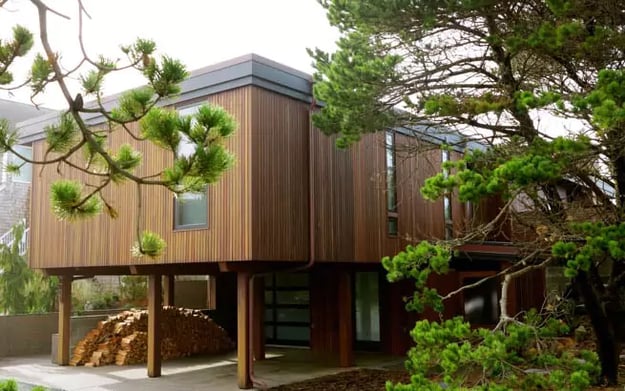

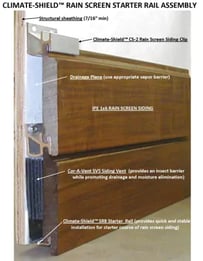
Rainscreen siding technology is taking the US market by storm (pun intended). This “new technology” might be over 800 years old, but it is still fairly new in US residential construction. Homeowners who are concerned about energy costs and having a healthy and comfortable home are now using rain screen systems to remodel their existing homes or when building their dream home. Using wood siding in a rainscreen design is fairly simple and you have many pricing options…and usually, you will get exactly what you pay for.
Rain screen design using wood siding is a very simple concept: space the wood siding away from the exterior sheathing of the house. The siding creates the “rain screen” and protects your house from the pounding elements from the outside. Rain, snow, wind-driven rain, sleet and more are kept away from your house. By spacing the siding away from the exterior sheathing, a “wall cavity” is created. The wall cavity has many functions and all of them are very good.
1.) Any bulk water from rain, snow, wind-driven rain or sleet that gets behind your siding can now drain directly out the bottom of the wall cavity. (Without a wall cavity, that same moisture would be trapped behind the siding, creating ideal growing conditions for mold - darkness, high moisture and a food source).
2.) Any moisture that is trapped inside the house now has a way to escape. Without a wall cavity, moisture from inside the home would be trapped between the sheathing and the siding. When mold develops and spreads, nothing good comes of it. If mold develops, decay and rot are highly possible, reducing the overall lifetime of the structure.
3.) Mold, mildew and decay can create bad smells and unhealthy living situations at best and structural concerns as a worst case.
4.) For most homes built after about 1975, they are often so tightly constructed; a wall cavity may be the only way for trapped moisture to escape.
Hey, what about good looking siding?
If natural beauty is an item that excites you, there are 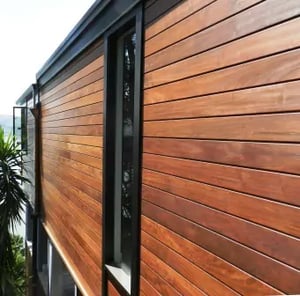 many very beautiful natural wood species that work very well for wood siding in rain screen system. For architects and builders who strive to build the 100 year home, rain screen systems are a natural. And seriously, who wants “ugly” for 100 years? Choose from many beautiful long-lasting wood siding species for your rain screen including time proven classics such as Ipe, Garapa, Machiche and Santa Maria hardwood siding. These rain screen cladding materials are well known for their beauty and long-lasting performance.
many very beautiful natural wood species that work very well for wood siding in rain screen system. For architects and builders who strive to build the 100 year home, rain screen systems are a natural. And seriously, who wants “ugly” for 100 years? Choose from many beautiful long-lasting wood siding species for your rain screen including time proven classics such as Ipe, Garapa, Machiche and Santa Maria hardwood siding. These rain screen cladding materials are well known for their beauty and long-lasting performance.
A rain screen system may not be the perfect siding for everyone, but it is a time-proven siding option for savvy owners and builders everywhere who value beauty and functionality. Learn more about rain screen systems and products here. There are several different rainscreen systems available to use with natural wood siding. Some systems are far more effective than others. Click here to learn more about the Climate-Shield Rain Screen System.
Please visit our website to learn more about rain screen systems by following any of the links below:
Architectural Rain Screen Details
REQUEST A FREE QUOTE FOR A RAIN SCREEN SYSTEM TODAY
RELATED:


